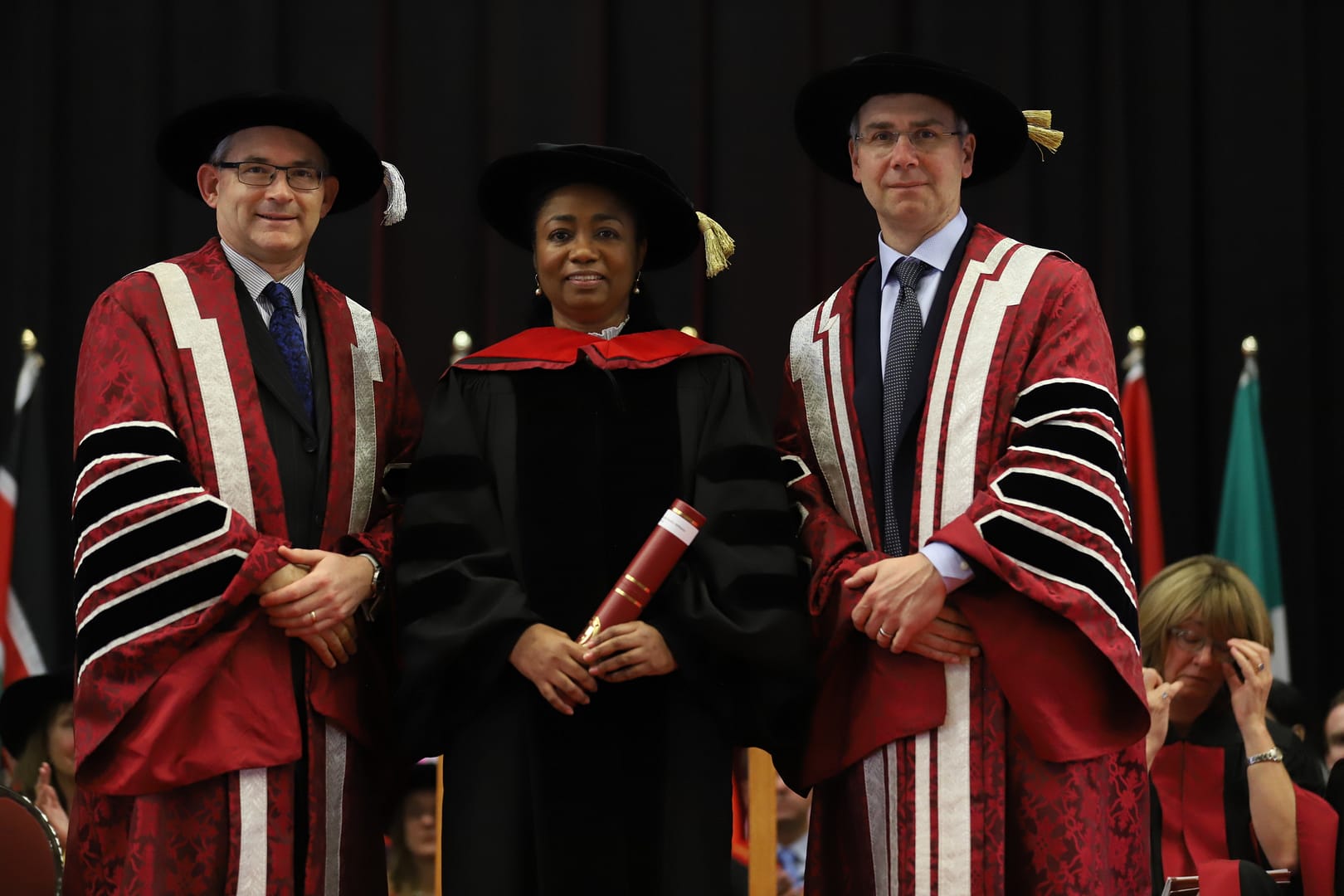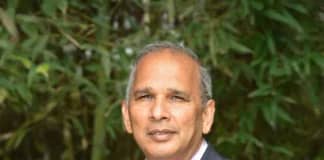
Philanthropy was celebrated by Saint Mary’s University this morning as the university recognized the achievements of Her Excellency Lady Sandra Williams. Lady Williams was one of four new honorary degree recipients honoured at the university’s spring convocation ceremonies.
Lady Williams, an alumna of Saint Mary’s University, graduated in 1986 with a Bachelor of Arts degree in the Department of Modern Languages and English. Since then, she has dedicated herself to the mission of philanthropy worldwide.
Because of her existing connection to the university, being recognized as Doctor of Civil Law, honoris causa, was all the more impactful.
“It is a humbling experience and an honourable task to stand before this scholarly gathering today,” began Lady Williams. “Today, I stand here in awe of the phenomenal accomplishments of Saint Mary’s University – a 217-year old institution that has intellectually nurtured students from all across the globe.”
In the case of Antigua, there was a noteworthy 956% increase of students to Saint Mary’s over the past five years – and currently, there are 76 students from the island nation with a total population of 80,000. To Lady Williams, this was a noteworthy point of pride.
“As the first Roman Catholic initiated university in Canada, the connection between Saint Mary’s and the Jesuit history of two of the leading high schools in Antigua, is intricately bound in a religious past,” said Lady Williams. “In over 33 years since my graduation, so much has indeed changed. How we adapt to the inevitability of change will dictate whether we succeed or fail, whether we grow or stagnate, whether we shine or shrink.”
Along with Lady Williams, the university was also pleased to recognize the extraordinary achievements of Senator Dan Christmas, Padraig O’Malley and Al MacPhee at this year’s spring convocation ceremonies.
“Saint Mary’s is known for academic excellence in arts, business and science and for our commitment to community engagement which serves as a foundation for all that we do,” said Dr. Robert Summerby-Murray, president and vice-chancellor of Saint Mary’s University. “We are proud to recognize the accomplishments of four exemplary people who share our Santamarian values, and grant them the highest honour that we can bestow, an honorary degree.”
Advertise with the mоѕt vіѕіtеd nеwѕ ѕіtе іn Antigua!
We offer fully customizable and flexible digital marketing packages.
Contact us at [email protected]

















Congratulations Lady Williams.
Philanthropy
REVIEWED BY WILL KENTON Updated May 29, 2018
What is Philanthropy
Philanthropy involves charitable giving to human causes on a large scale. Philanthropy must be more than just a charitable donation. It is an effort an individual or organization undertakes based on an altruistic desire to improve human welfare. Wealthy individuals sometimes establish foundations to facilitate their philanthropic efforts.
BREAKING DOWN Philanthropy
Philanthropy dates back to Greek philosopher Plato in 347 B.C. His will instructed his nephew to use the proceeds of the family farm to fund the academy that Plato founded. The money helped students and faculty keep the academy running.
Around 150 years later, Pliny the Younger contributed one-third of the funds for a Roman school for young boys. He instructed the fathers of the students to come up with the rest. The intention was to keep young Romans educated in the city rather than abroad.
In the United States
In 1630, John Winthrop of the Massachusetts Bay Colony preached to Puritan settlers that the rich have an obligation to take care of the poor. Meanwhile, the poor must do the best they can to improve their situation. Three years later, John Eliot wrote a letter to Sir Simmons D’Ewes asking for money to found a college in Massachusetts. In 1638, John Harvard laid the foundations for Harvard University after bequeathing half of his estate to found the school.
Many people in the United States give money to causes in which they believe. Perhaps the most famous example of philanthropy came from Andrew Carnegie, simply because of the scale of his giving. Carnegie’s wealth helped build more than 2,800 libraries all over the world. He also endowed several universities and a charitable trust that still runs nearly 100 years after Carnegie’s death in 1919. Estimates of his total charitable contributions exceed an estimated $350 million. Carnegie lived up to his credo that a man who dies rich dies disgraced, and the rest of society learned to follow his example.
Billionaire Microsoft mogul Bill Gates, along with his wife, Melinda, established the Bill and Melinda Gates Foundation to support global development and global health programs. Another example is the Ford Foundation, established by the son of Ford Motor Company founder Henry Ford. The foundation focuses on strengthening democracy, improving economic opportunity and advancing education.
Statistics
Philanthropy statistics in 2016 point to record giving by individuals and corporations, according to the National Philanthropic Trust. Americans gave more than $90.05 billion to charities in 2016, an increase of 4.2% over the previous year. Corporations gave $18.55 billion to charities in 2016, an increase of 3.5% from 2015. Individuals gave $281.86 billion to nonprofit groups.
As much as 32% of charitable donations in 2016 went to religious organizations. Most of the donations to religious groups went to local places of worship. Around 16%, went to educational groups. Coming in third were human services groups, which reaped 12% worth of windfalls in that year, while grant-making foundations received 11% and health organizations received 9%. Overall, charitable giving accounted for 2.1% of gross domestic product in 2016.
Comments are closed.